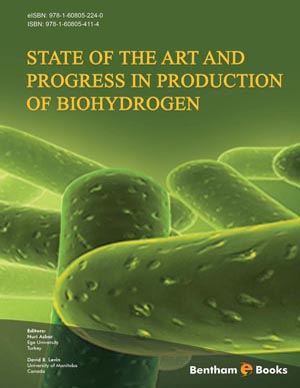Abstract
The production of hydrogen which is predicted to be the fuel of the future has a number hurdles to overcome. One of the constraints is cost of production. However, cost of production can be significantly reduced considering biowastes as a potential and cheap renewable substrate for hydrogen production. The wastes are a result of the many activities of humans leading to wastes generation and includes household, municipal, agricultural and industrial wastes. Further, the microbial diversity available enables us to select the right microorganisms to ferment a particular biowaste in obligate anaerobic or facultative anaerobic single stage or hybrid system to covert the carbonaceous components to biohydrogen. The systems can be operated with an axenic culture or a consortia of microbial cultures. Factors that affect microbial growth need to be optimized and the systems can be operated in a continuous mode. Further, this approach leads to dual benefits, that is, a simultaneous biohydrogen – a green fuel production and pollution load reduction for the industry. Cost saving technologies are always attractive to industry where cost of waste management is high. The aim of this review is to summarise the possible technologies that combine utilisation of biowastes with production of biohydrogen. This will be attractive to industry as the cost of management of the biowastes can be off set by the alternative green fuel produced during the process. When biowastes are utilised as energy substrates for biohydrogen producing microbes.
Keywords: Biohydrogen, photofermentation, heterotrophic bacteria, biowastes, hybrid systems, phototrophic bacteria, biomass, agroindustrial residues, Rhodopseudomonas palustris, palm oil mill effluent, biofuel.






















